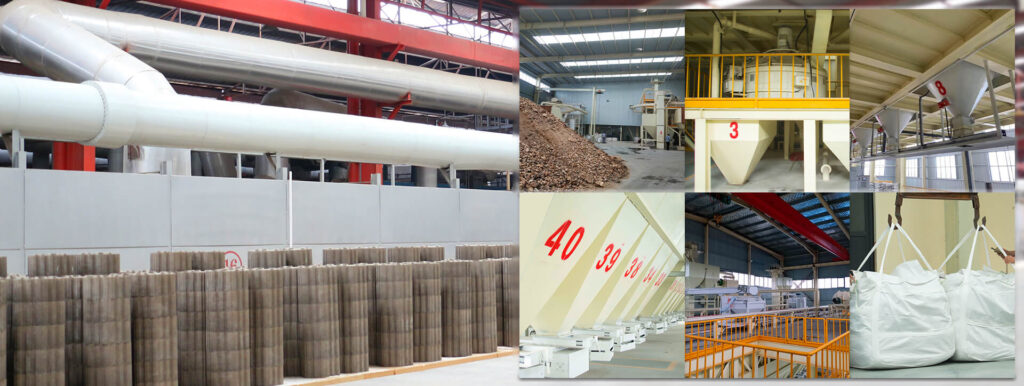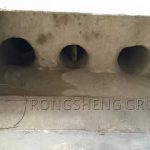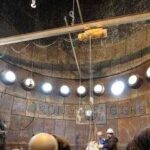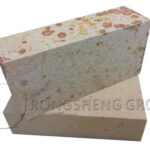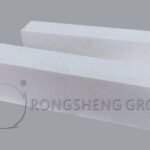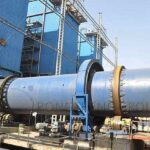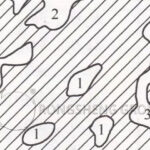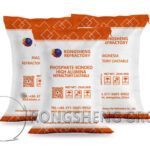Aluminum Silicate Refractory Materials for Ladles
What are the commonly used aluminum silicate refractory materials for ladles? Ladle bricks. Aluminum silicate ladle refractory material. Rongsheng refractory material manufacturer.
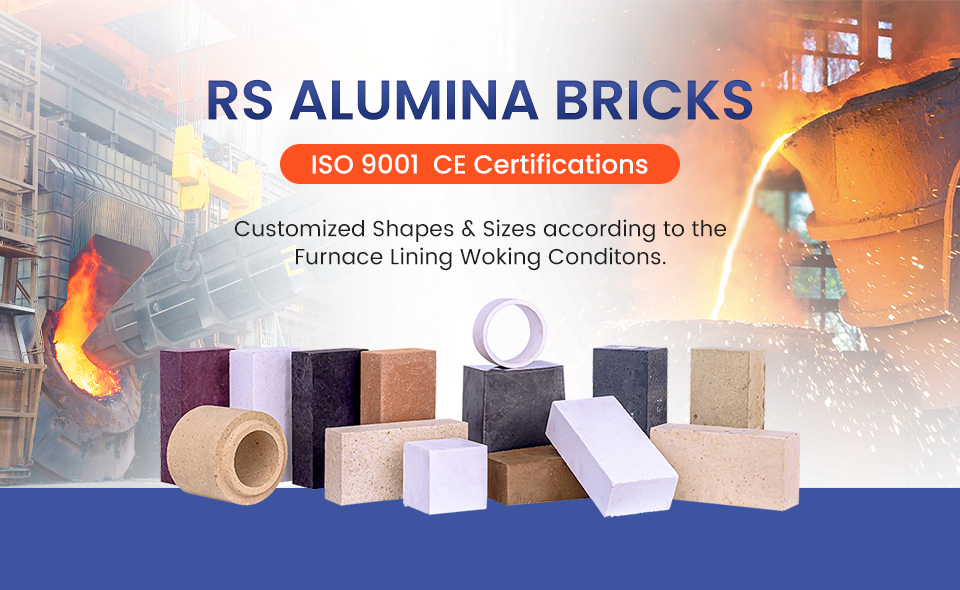
Fireclay Bricks
Clay bricks are the earliest ladle refractory materials used in my country. In the 1950s and 1960s, the refractory materials used in ladles in my country were mainly various clay bricks. Due to the low cost of use, some steel plants still used clay bricks for ladles until the 1980s. The physical and chemical indicators of clay bricks used in ladles in a steel plant are: Al2O3 44.10%, SiO2 52.10%, and Fe2O3 1.72%. The apparent porosity is 16% to 18%, and the normal temperature compressive strength is 54.9 to 96.0MPa. The service life of clay ladle lining bricks varies depending on the usage conditions of each steel plant. Service life of clay ladle lining bricks in steel plants.
Although clay bricks are no longer used in ladles in my country, clay bricks made a significant contribution to the recovery and subsequent development of China’s steelmaking industry in the early days of the founding of the People’s Republic of my country.
High Alumina Brick
With the continuous development of steelmaking technology and the continuous improvement of steel output and quality, the service life of clay ladle lining bricks is short. Since the late 1960s, some steel mills in my country have begun to use various high-aluminum lining bricks in ladles, which has greatly improved the life of ladles.
Wuhan Iron and Steel’s 270t open-hearth ladle began to use second-grade high-alumina bricks in 1968. By 1970, the ladle age reached 25.7 times, which was 2.5 times that of clay lining bricks. In 1974, the age reached 31.5 times. The 70t ladle for the No. 2 steelmaking converter of Wuhan Iron and Steel Co., Ltd. has been using high-aluminum bricks with an Al2O3 content greater than 72% since 1980. The ladle age is 34 times and the highest is 50 times.
Since June 1986, Baosteel’s 300t ladle has used first-class high-alumina bricks produced by a refractory material factory for the entire wall, with an average ladle age of about 50 times. After the continuous casting machine was put into operation, the usage conditions of the ladle deteriorated and the service life of the ladle lining was shortened. Baosteel has cooperated with certain refractory material manufacturers to develop micro-expansion high alumina bricks with excellent performance. Products produced by Factory A were officially used in April 1992. The average service life is 81.5 times and the maximum service life reaches 100 times. The average service life of products from Factory B is 78.6 times, with a maximum of 122 times (continuous casting ratio 55.73%).
Taigang’s 70t ladle uses high-aluminum lining bricks and has a service life of 64.3 times.
In short, the use of high-aluminum lining bricks for ladles in my country has significantly improved the service life of ladles. It ensures the smooth progress of steelmaking production and promotes the further development of the steelmaking industry. Some steel plants in my country use high alumina bricks for ladles.
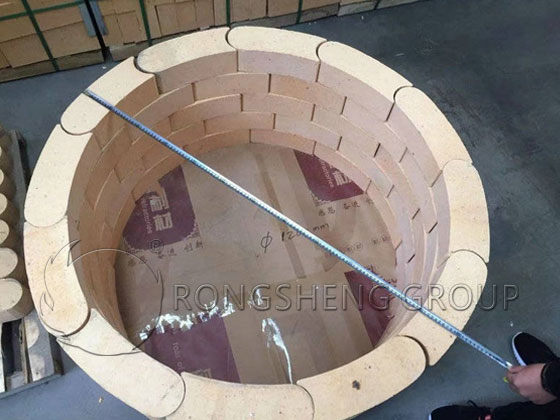
High Aluminum Ramming Material
In the late 1970s, some steel plants in my country used high-aluminum ramming materials for ladle linings and achieved good results. High-aluminum ramming material is an amorphous refractory material with good plasticity that is formulated with high-quality high-alumina bauxite clinker as raw material (aggregate and fine powder) and industrial phosphoric acid as binder through batching and mixing. The integral ramming technology is used to form an integral lining, which has a longer service life. The service life of high-aluminum integral ramming linings for ladles in some steel plants in my country is shown in the table below.
Pyrophyllite Bricks
Pyrophyllite brick is a fired refractory brick product produced with pyrophyllite as the main raw material. In the early 1970s, a wax stone ladle brick produced by a refractory material factory in Fujian was trialled on different types of ladles by many steel companies. The results show that the performance of wax stone bricks is better than that of clay bricks and third-grade high alumina bricks used at that time. Used on a 15t steel ladle in steel plant 1, the service life reaches 66 times. The wax stone bricks with 72% SiO2 content produced by the factory were also tried in the 70t ladle of the second steelmaking plant of a certain steel plant. But the effect is not ideal and the service life is only 14 times. A 300-ton steel ladle in a steel plant used waxstone bricks imported from Japan from September 1985 to 1988, with an average lifespan of 38 times. The physical and chemical indicators of wax stone bricks for ladles produced by a certain factory are: SiO2 78.95%, Al2O3 18.85% ~ 19.51%, Fe2O3 0.44% ~ 0.52%. The apparent porosity is 14% to 18%, and the normal temperature compressive strength is 32.9 to 62.9MPa. Due to various reasons, waxstone bricks have not been popularized and applied in ladles in my country.
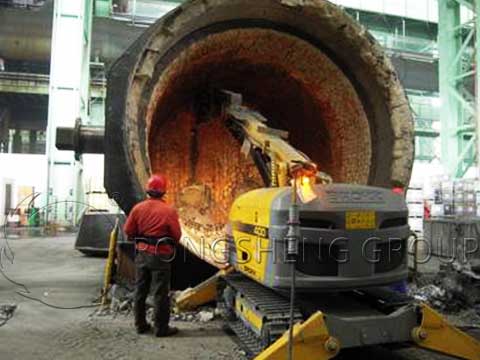
How Much Does a Ton of Ladle Bricks Cost?
How much does a ton of ladle bricks cost? Before understanding the price of ladle bricks, we need to know what ladle bricks are and what refractory bricks are used in ladles.
Ladle bricks are refractory bricks used for lining ladles, using magnesia carbon refractory bricks.
The refractory bricks used in the working layer of the ladle also depend on the internal environment of the ladle. The grades of magnesia carbon bricks used in different parts are also different, which also affects the price of the ladle bricks. Let’s first analyze what are the factors that affect the price of ladle bricks.
- Physical and chemical indicators of ladle bricks. The physical and chemical indexes of ladle magnesia carbon bricks are the basic judgment on the construction performance and service performance of ladle bricks. Ladles carrying different capacities of molten steel use different physical and chemical indexes of ladle bricks. Different physical and chemical indicators will also affect the selection of raw materials for making ladle bricks, and will also have a slight impact on the price of ladle bricks.
- Ladle bricks in different parts of the ladle. The ladle is divided into the slag line area, the impact area, and the ladle wall area. The ladle is a transportation device for carrying molten steel. The impact area must often withstand the erosion of molten steel and steel slag. The ladle bricks used are of the highest grade. , better resist the erosion of molten steel and steel slag, and the slag line area has to withstand the erosion of steel slag for a long time, and the grade of ladle bricks used is also higher. Different parts of the ladle use different grades of ladle bricks, which is also a factor affecting the price of ladle bricks.
- The properties of ladle bricks used in ladles of different sizes are also different, which is also a factor affecting the price of ladle bricks.
Through the introduction of the above three points, the price of ladle bricks per ton needs to be comprehensively calculated based on the application environment of ladle bricks, the physical and chemical indicators of ladle bricks, and other information. The price of large and medium-sized refined ladles and ladle bricks is around 9,800 yuan per ton.
To buy high-quality ladle bricks, contact us to get free samples and quotes.

